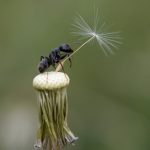To help managers find ways to improve their organizations and teams, the HPO Center started a five year research project into the factors of sustainable high performance organizations and High Performance Teams. The result of this research, the HPO Framework, is one of the subjects discussed in the management book ‘Animal Firm’ as are by many examples of animal behavior illustrating the workings of the HPO Framework at organizations worldwide. As opposed to many previous publications on High Performance Team and High Performance Organizations, this book describes not just a theory on high performance but also a vast number of case studies in which this theory was put into practice.
Animal Firm refers to Orwell’s classic book Animal Farm, in which authoritarian pigs are the boss. An Animal Firm is based on international research into High Performance Organizations (HPO) and High Performance Team. In this article we link the HPO success factors of excellent performance to strong animal characteristics. And what we discovered? That ‘dumb geese’, ‘tactless elephants’ and ‘barking dogs’ perform better. It has since been proven that reorganizations, high bonuses and more checklists do not help people perform better. Our study among High Performance Team showed that success depends on other factors. Interestingly, many animals appear to instinctively demonstrate this behavior.
But how do you cleverly organize such animal behavior? How do you control it? How do you create a High Performance Team? It is quite simple actually.
Simply go on safari and study the Big Five of animal behaviors to create your own High Performance Team!
1. The Elephant
 The quality of the leadership of the matriarch is all-important. Qualitative leadership means that the matriarch, the oldest and most experienced elephant, indicates direction, ‘coaches’ the herd towards a new goal, monitors the solidarity of the herd and leads strongly by example. What are the characteristics of this exemplary role? The matriarch always acts in the interest of the group, is result-oriented, decisive and establishes clear frameworks. For instance, the matriarch indicates when and where the herd will stop to drink or sleep, and when they will continue walking. This is HPO behavior that serves to protect the next generation.
The quality of the leadership of the matriarch is all-important. Qualitative leadership means that the matriarch, the oldest and most experienced elephant, indicates direction, ‘coaches’ the herd towards a new goal, monitors the solidarity of the herd and leads strongly by example. What are the characteristics of this exemplary role? The matriarch always acts in the interest of the group, is result-oriented, decisive and establishes clear frameworks. For instance, the matriarch indicates when and where the herd will stop to drink or sleep, and when they will continue walking. This is HPO behavior that serves to protect the next generation.
HPO Factor: Quality of Management – A successful manager builds relationships of trust by combining honest and coaching leadership with strong model behavior, fast decision-making (also regarding non-performers) and result orientation, all of which is based on a long-term vision.
2. The African Wild Dog
This animal that shows the unique characteristics of long-term orientation in a ‘difficult market’. Typical behavior of the African wild dog is their social collaboration. They encourage each other and stimulate each  other to be successful. Every member of the pack contributes to achieving the results. Successful hunting techniques are shared with the next generations since long-term survival comes before short-term gain. The pack (a truly High Performance Team) also forms a safe environment in which the interest of the group takes precedence over the interest of the individual.
other to be successful. Every member of the pack contributes to achieving the results. Successful hunting techniques are shared with the next generations since long-term survival comes before short-term gain. The pack (a truly High Performance Team) also forms a safe environment in which the interest of the group takes precedence over the interest of the individual.
HPO Factor: Long-term orientation – Long-term continuity always comes before short-term profit to a successful manager. This manager creates a safe and stable work environment. The long-term mindset focuses on all interested parties of an organization: customers, society, suppliers, employees, the government, social groupings – everyone benefits.
3. The Ant
 Ants work continuously to share knowledge in order to become more effective as a group. Every ant in the colony takes on the role of master or companion. If an ant has specific knowledge, such as about a food source, he is automatically the master. He conveys this knowledge to the other ants, the companions. Ants make mistakes, but learn from each other how to do better. They are sensitive to nonverbal communication and link it directly to action.
Ants work continuously to share knowledge in order to become more effective as a group. Every ant in the colony takes on the role of master or companion. If an ant has specific knowledge, such as about a food source, he is automatically the master. He conveys this knowledge to the other ants, the companions. Ants make mistakes, but learn from each other how to do better. They are sensitive to nonverbal communication and link it directly to action.
HPO Factor: Openness and Action Orientation – A successful HPO manager creates an open culture in which everyone is involved often in important processes, communicates with one another, shares knowledge continuously, learns from mistakes, encourages change and takes action to improve performance.
4. The Crow and the Titmouse
Simplify. Improve. Innovate. The titmouse and the crow have a rich imagination when it comes to finding new and clever solutions. In other words, they are exceptionally innovative. What makes titmice so unique is that they can also share ‘life lessons’ with others of their species. With the titmouse, knowledge is anything but power. Crows show how ingenuity and creativity can contribute to improving performance. Both bird species demonstrate characteristics that an organization requires to be distinctive. All of this is supported by an important characteristic: endless curiosity.
is that they can also share ‘life lessons’ with others of their species. With the titmouse, knowledge is anything but power. Crows show how ingenuity and creativity can contribute to improving performance. Both bird species demonstrate characteristics that an organization requires to be distinctive. All of this is supported by an important characteristic: endless curiosity.
HPO Factor: Continuous Improvement and Renewal A successful HPO manager always has employees strive to obtain the optimal result and to get the best out of themselves, their colleagues and the organization. This type of manager ensures a distinctive strategy and has everyone contribute to improving, simplifying and coordinating processes, services and products.
5. The Wildebeest, Giraffe, Zebra and Ostrich on the Savannah
 Wildebeest, zebras, ostriches and giraffes move side by side, flanked by antelopes and other small animals. Predators often lie in wait for opportunities of inattention and try to separate the old, sick and young animals from the group. To resolve this ‘company problem’ of inattention, these prey animals form a diverse and complementary High Performance Team. Teamwork and group interest are therefore of the utmost importance. By combining their diversity with strong characteristics, they can keep the predators at bay.
Wildebeest, zebras, ostriches and giraffes move side by side, flanked by antelopes and other small animals. Predators often lie in wait for opportunities of inattention and try to separate the old, sick and young animals from the group. To resolve this ‘company problem’ of inattention, these prey animals form a diverse and complementary High Performance Team. Teamwork and group interest are therefore of the utmost importance. By combining their diversity with strong characteristics, they can keep the predators at bay.
HPO Factor: Quality of Employees – A successful manager creates diverse and complementary teams on all levels of the organization.
Setting to work with your own High Performance Team and High Performance Organization.
 Coach like the elephants do. Run in relay form like the African wild dogs. Be like the ants that learn from each other and share knowledge as part of a guild system. Organize innovation like crows and titmice. Be like the wildebeest, zebras, giraffe and ostriches that group together on the Savannah. These are all characteristics of the Animal Firm. Do you recognize them in yourself, your team or your organization? What can you do to bring out the animal in you?
Coach like the elephants do. Run in relay form like the African wild dogs. Be like the ants that learn from each other and share knowledge as part of a guild system. Organize innovation like crows and titmice. Be like the wildebeest, zebras, giraffe and ostriches that group together on the Savannah. These are all characteristics of the Animal Firm. Do you recognize them in yourself, your team or your organization? What can you do to bring out the animal in you?
Start a dialog with your coworkers and start your own High Performance Team!
Also watch the HPO video of ‘The African Wild Dog – Long-term Orientation’ or ‘The Elephant – Quality of Management’!
For more information about the HPO Framework, HPO Diagnosis, our lecturers, HPO Experts, workshops and Master Classes, please contact us (vink@hpocenter.com or T. +31 (0) 35 – 603 70 07).


